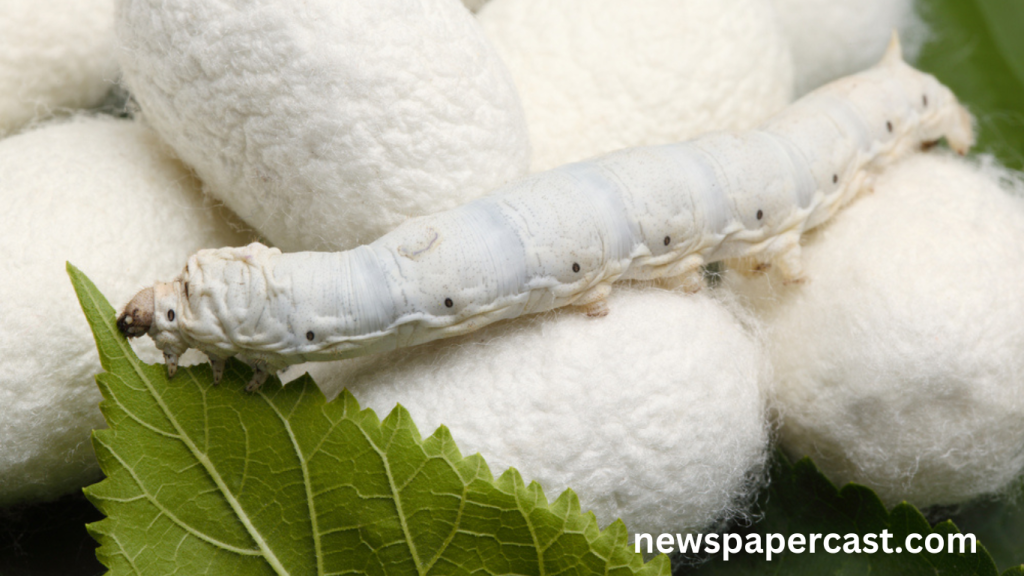Silk is one of the oldest and most luxurious fabrics in the world, renowned for its softness, shine, and durability. Historically, it has been associated with wealth, sophistication, and refinement. But have you ever wondered how this exquisite fabric is made? The process of silk production is intricate and involves both natural and human intervention. Yet, behind its allure lies an ethical dilemma that raises important questions about sustainability and animal welfare.
The Life Cycle of Silk: From Silkworm to Fabric
The creation of silk begins with the silkworm, a creature whose lifecycle is closely intertwined with human ingenuity. The silkworm is the larval form of the silk moth, and its primary activity is consuming mulberry leaves until it is ready to spin a cocoon. This cocoon, made of a continuous filament of silk, is the key ingredient in silk production.
Read More : Snow Animals and How They Survive the Cold
Once the silkworm has spun its cocoon, the process of harvesting the silk begins. The cocoon is boiled to soften the sericin, a protein that binds the threads together. The softened silk is then unraveled into long strands, which are eventually spun into thread and woven into fabric. This labor-intensive process is often done by hand or with the aid of machines, depending on the scale of production.
The Ethical Dilemma of Silk Production
While silk is often celebrated for its luxurious feel and sheen, its production raises significant ethical concerns. The primary issue lies in the way silkworms are treated during the process. To obtain the silk, the silkworms are typically boiled alive in their cocoons, preventing them from emerging as moths. This method of harvesting has been criticized for its cruelty towards the animals involved.
The ethical dilemma becomes more pronounced when considering the environmental impact of traditional silk production. The farming of mulberry trees to feed silkworms requires large amounts of water and land, contributing to deforestation and other environmental issues. Additionally, the pesticides and chemicals used to protect the trees from pests can have harmful effects on surrounding ecosystems.
Alternatives to Traditional Silk Production
In response to the ethical concerns surrounding silk, several alternatives have been developed. One of the most notable is “peace silk” or “ahimsa silk,” a type of silk that allows the silkworms to complete their lifecycle and emerge from their cocoons before the silk is harvested. This method is seen as more humane, as it does not require the boiling of live silkworms.
Another alternative is the use of synthetic silk, which is made from petroleum-based products like nylon or polyester. While this eliminates the ethical concerns associated with animal treatment, synthetic silk still carries its own environmental issues, such as plastic pollution and reliance on non-renewable resources.
The Growing Popularity of Sustainable and Ethical Fashion
In recent years, the fashion industry has become increasingly aware of the need for sustainability and ethical practices. Consumers are now more conscious of the origins of the products they purchase, demanding greater transparency from brands. This has led to a rise in sustainable silk alternatives, as well as a greater focus on eco-friendly and cruelty-free practices in the fashion industry.
Some brands are opting for organic silk, which is produced using sustainable farming practices that minimize environmental damage. Others are investing in lab-grown silk, a groundbreaking innovation that allows for the creation of silk without the use of silkworms at all.
Frequently Asked Questions
What is silk made from?
Silk is made from the fibers produced by silkworms, specifically the cocoon they spin during their lifecycle.
How is silk harvested?
Silk is harvested by boiling the cocoon to soften the sericin, allowing the silk threads to be unwound.
Is silk production harmful to silkworms?
Traditional silk production involves boiling the silkworms alive, which raises ethical concerns about animal welfare.
What is peace silk?
Peace silk, or ahimsa silk, allows the silkworms to complete their life cycle before the silk is harvested.
Is synthetic silk an ethical alternative?
Synthetic silk, made from petroleum-based materials, eliminates harm to animals but contributes to environmental issues like plastic pollution.
What are the environmental impacts of silk production?
Silk production requires large amounts of water and land for mulberry farming, potentially contributing to deforestation and pesticide use.
Can silk be made without using silkworms?
Yes, lab-grown silk and other innovations are being developed to create silk without harming silkworms.
How can I make ethical choices when buying silk?
Look for sustainable alternatives like peace silk or brands that commit to cruelty-free and eco-friendly practices.
Conclusion
Silk, while luxurious, presents ethical and environmental concerns. Exploring alternatives like peace silk and sustainable practices allows consumers to enjoy luxury without compromising their values.

